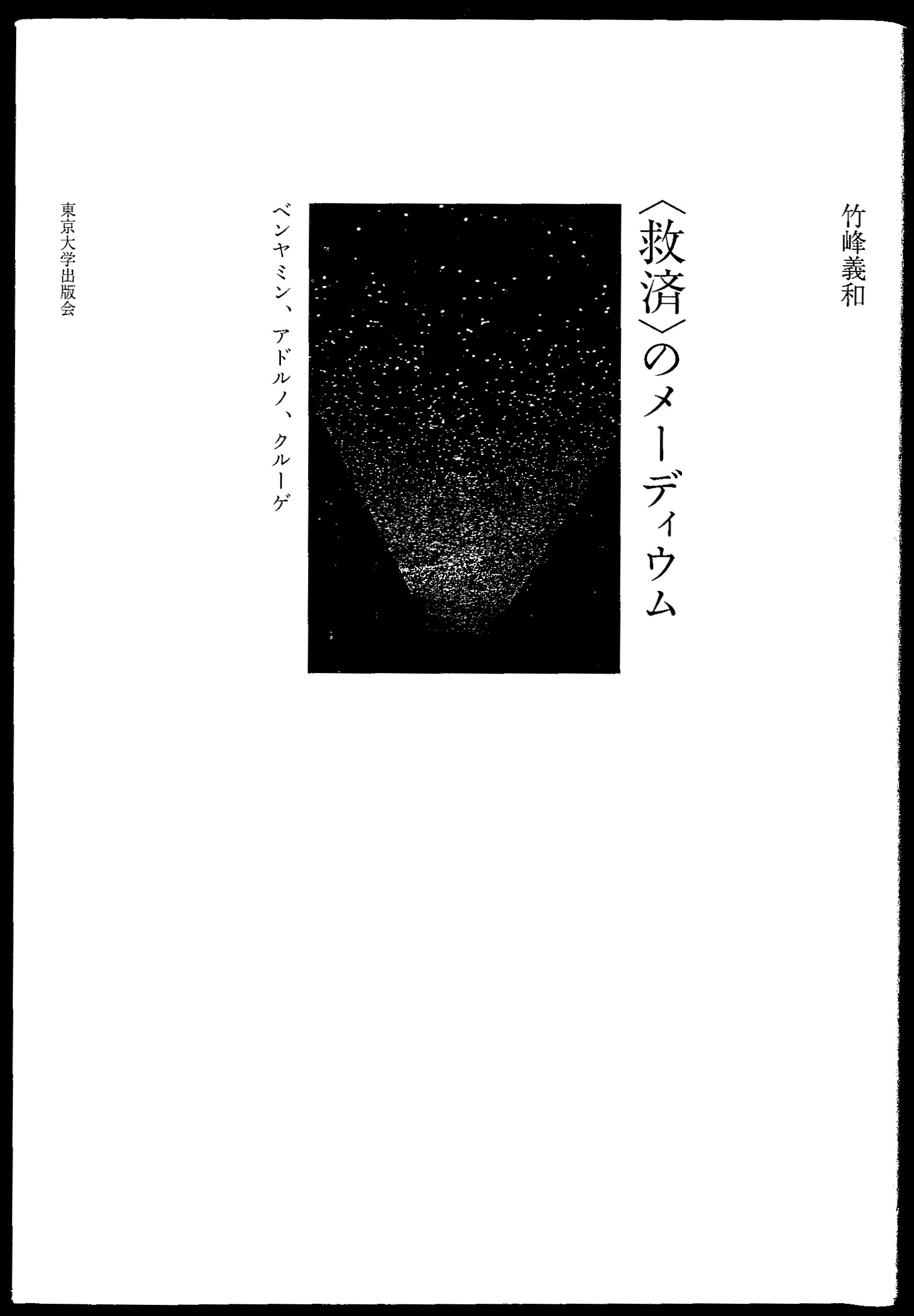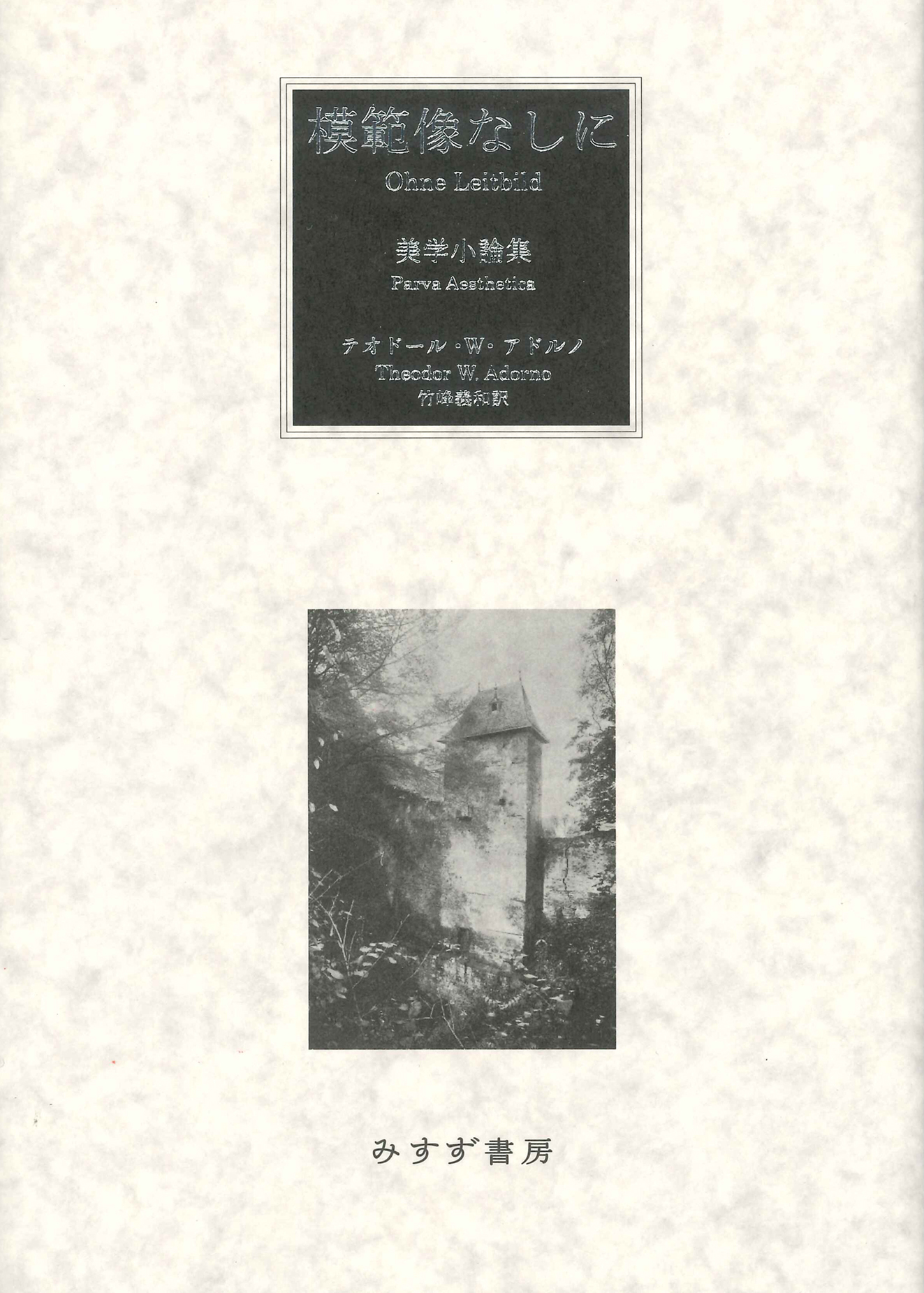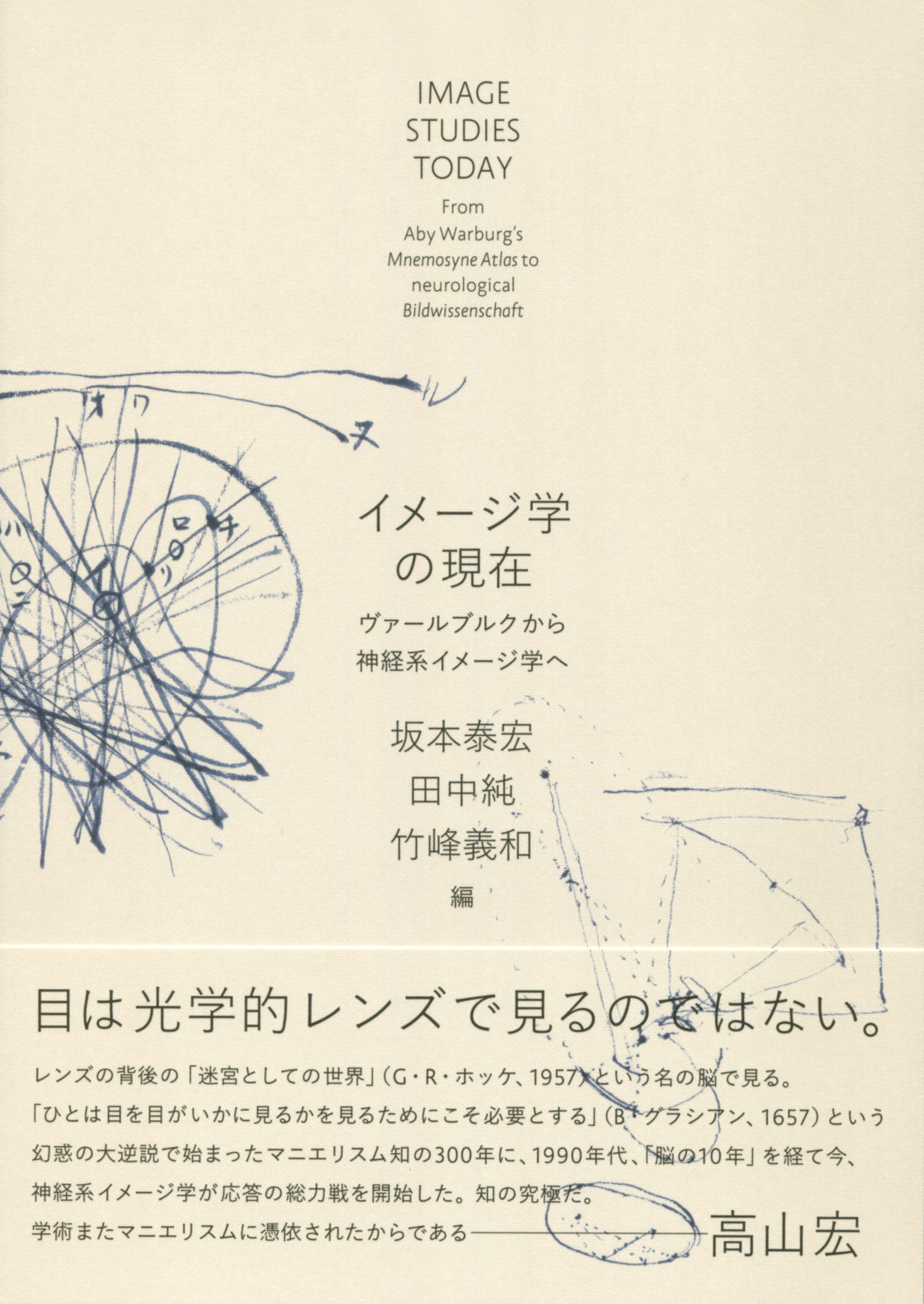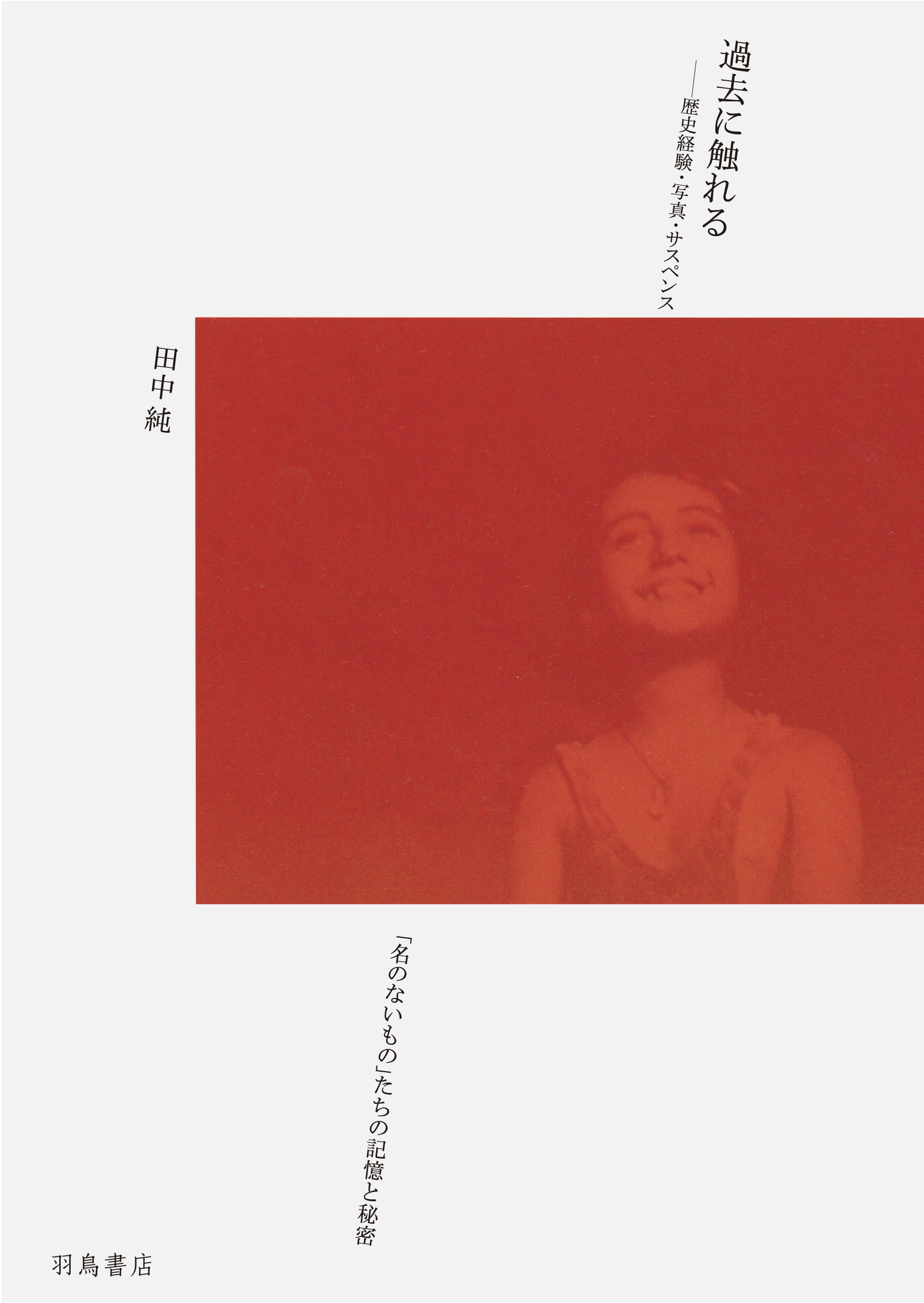
Title
Kyusai No Medium: Benjamin, Adorno, Kluge (The Medium of Redemption: Benjamin, Adorno and Kluge)
Size
472 pages, 127mm x 188mm
Language
Japanese
Released
September 26, 2016
ISBN
978-4-13-010130-1
Published by
University of Tokyo Press
Book Info
See Book Availability at Library
Japanese Page
This book attempts to bring the art and media theories of the Frankfurt School into a new perspective by working out the texts of Walter Benjamin, Theodor W. Adorno, and Alexander Kluge, which elaborate the media-aesthetic aspects connected with the thought-figure of “redemption.” The focus is on the authors' common interest in reinterpreting mediated works of art, such as certain films or individual productions for television, as a kind of Eingedenken (remembrance or commemoration). For in them, the presence of those who are oppressed by their respective rulers and in danger of being forgotten is sensibly experienced. From this messianic perspective, the film and the television production become media of redemption, which can contain a revolutionary potential to reveal in the perception of the audience a link between their own feelings and the experience of oppression.
The first part, entitled “Aesthetics of Redemption,” is about a reconstruction of the development process of Benjamin's thought about “redemption” and media. The starting points for this are his early writings, especially the concept of “play,” which later connects with his reflections on technological media and their perception.
Part II shows the dialectical dynamics in Adorno's thoughts on art under the title “Art-work as the Medium.” It is generally assumed that Adorno had insisted on a rather elite-conservative understanding of art for a lifetime. However, in his art-philosophical writings, there are also places where he sketches a media aesthetic in which not only media reproduction techniques are discussed but also what is meant by the term “kitsch.”
Part III, entitled “Transformations of the Bottle Mail,” shows how the concept of the artwork as a medium of perception in Adorno was adopted, modified, and further developed by his philosophical successor, Alexander Kluge, in his theoretical works, like Public Sphere and Experience (1972), or his alternative-independent television slots that were produced and broadcasted starting in the mid-1980s.
(Written by TAKEMINE Yoshikazu, Associate Professor, Graduate School of Arts and Sciences / 2018)



 Find a book
Find a book




